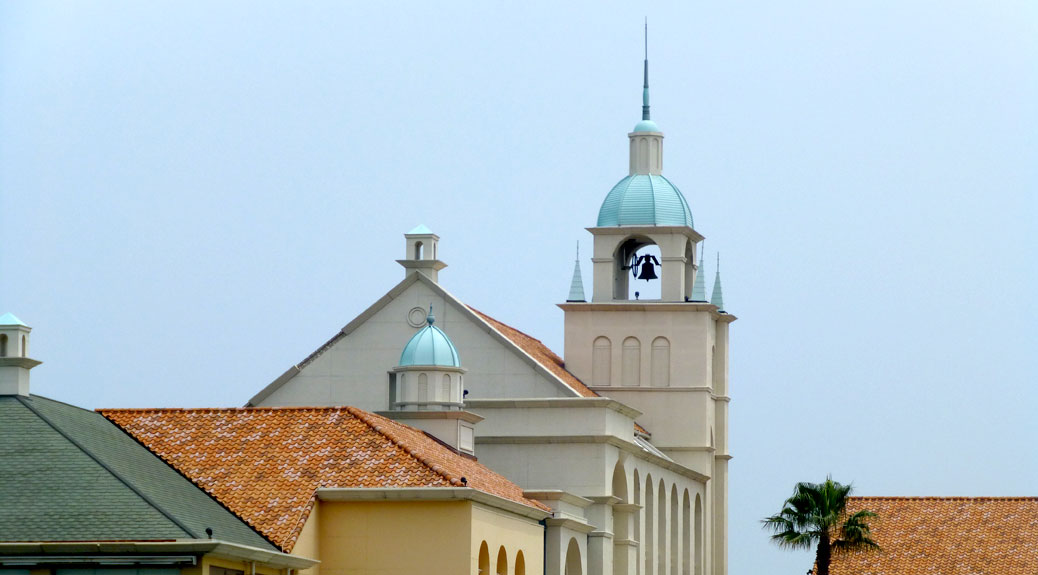While in Japan, we’re hoping to take advantage of our ability to see some different parts of the world. Places like Beijing and Seoul are just puddle-jumpers now and Sydney is about 10 hours away. But Japan itself offers a lot of travel opportunities as well.
We took advantage of a university conference in Fukuoka Prefecture this weekend to see a different part of Japan. Fukuoka is on the north coast of Kyushu (one of the four large islands of Japan) and is Japan’s sixth-largest city. It’s also ranked 12th on Monocle Magazine’s 2013 list of the world’s most livable cities. We could definitely see why. More on that later.
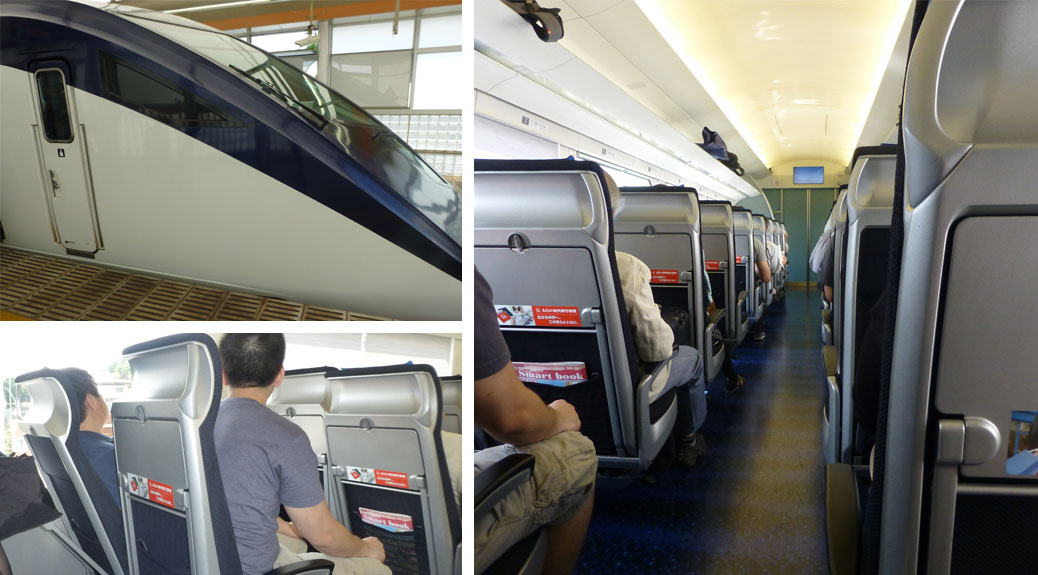
Narita Airport is east of Tokyo and it took two-and-a-half hours by bus to get to Kawagoe when we first came to Japan. We took the train this time, which requires a trip on a Shinkansen—a Japanese bullet train. The trip to the airport only took an hour and 40 minutes. No more bus for us!
The airport process was a breeze as well. Being a domestic flight, there wasn’t a lot of hubbub to get to the gate. The train station is in the airport, so you make your way through the terminal. Japanese television reporters stop you to ask about Japanese pop stars (yes, this really happened… I doubt they’ll air it as we weren’t very impressive). Security consists of the standard carry-on X-Ray, but we didn’t have to remove shoes, belts, etc. or even empty change from our pockets. We could bring liquid through as well, but the security officer required us to remove the lid so they could smell the contents.
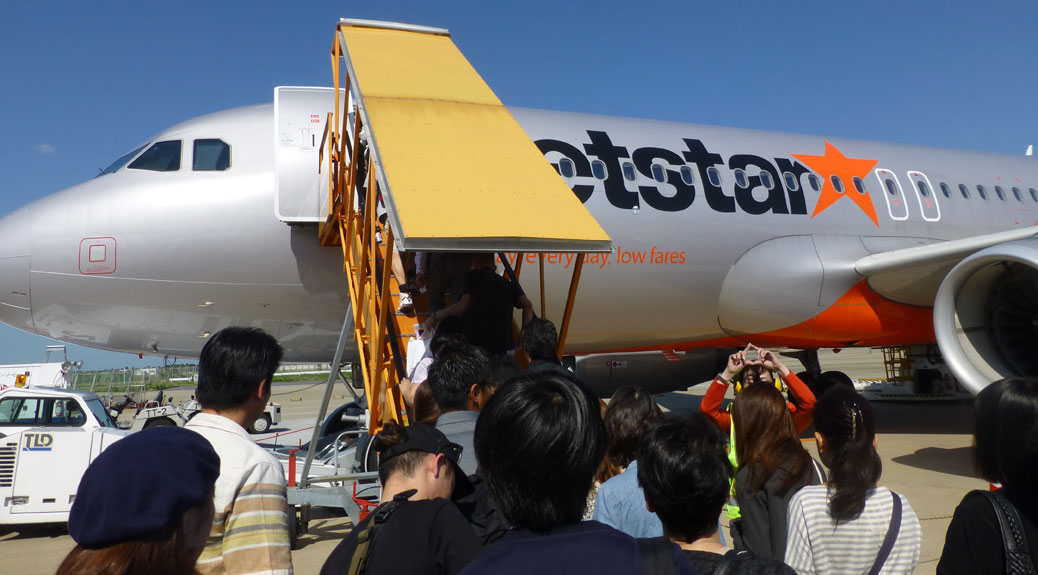
After a short wait, we were directed to the Friendly Airport Limo (a bus with standing-room only) which took us from the gate to the plane on the tarmac. We waited while they finished the inspection, but it was 20 minutes from the time they opened the door until we were airborne. Very efficient and pleasant flying experience.

The two-hour flight arrived around dinner time, and despite some travel snacks, first priority was finding food. We had a few places mapped out in advance and chose a Sudanese falafel and kebab restaurant called Kebabooz in the trendy Daimyo neighborhood. The small restaurant (five tables total) was down an alley, which was in another alley, which meant it HAD to be good. The chefs/servers were listening to ’90s American gangster rap at an appropriate volume. A warugaki (bratty child) amused the other diners with her antics.
The food was amazing… easily a top-5 Japan meal. You could watch the hummus being handmade-to-order in the kitchen. The best thing on my plate was the salata aswad, a Sudanese eggplant salad. Basically it was eggplant potato chips covered in a spiced yogurt. I could have eaten it all day.

We headed back to the train station so we could get checked into our hotel before dark. We were highly amused by the fountain/clock on the main street by the station. Whether it was the fact that the fountain was an accurate digital clock or that two traditional Manneken Pis-style statues were making sure the fountain stayed full, we’ll never know.

We stayed at the Fukuoka Hilton, which was actually the cheapest hotel in town thanks to a summer special rate. We had an unbelievable view from our 8th-floor window of Fukuoka Tower, Momochi Seaside Park and Hakata Bay. The tower glows at night thanks to 8,000 half-mirrors attached to its outside walls.
Saturday was the conference, so I was left to my own devices for the better part of the day. I stopped at a couple different stations to see what was happening in other parts of Fukuoka, but eventually ended up back at the area by our hotel. I walked down the main street and worked my way down to Fukuoka Tower. For 800 yen, you can ride the elevator up to the observation tower, but I opted for the free selfie. An oversized novelty camera with a small shelf offers instruction on how to get an up-the-nose shot of yourself in front of the tower. Mission…. ACCOMPLISHED!

Just past the tower is Momochi Seaside Park. The beach stretches along Hakata Bay and seemed to be a hotspot for Fukuoka’s young folk. Sunbathers dodged beach soccer and volleyball games while fisherman wandered past the barricade on the pier to catch a few of the jumping fish in the bay.
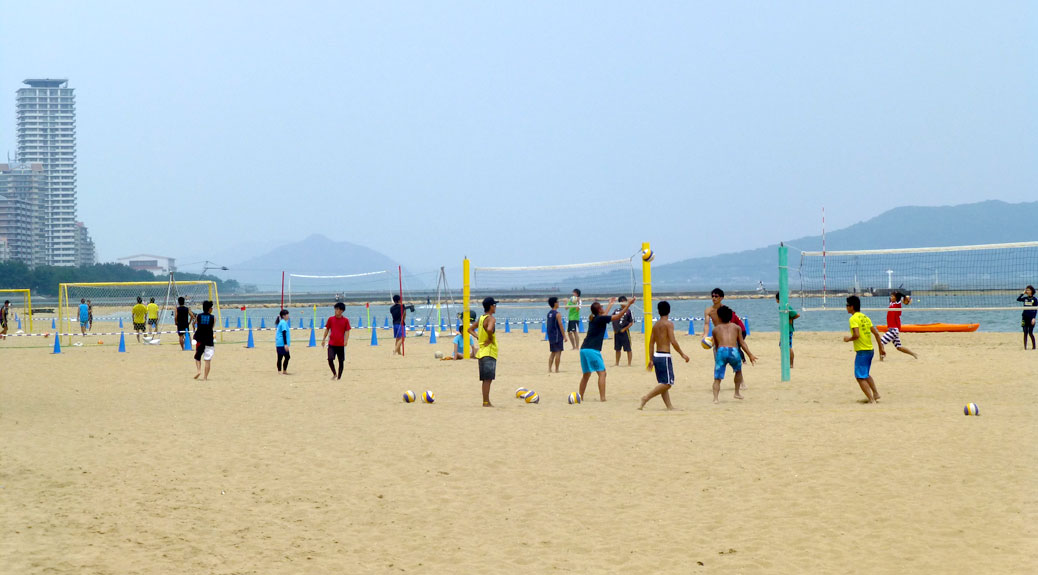
Our hotel was attached to the Fukuoka Yafuoka! Dome, home of the SoftBank Hawks baseball team. I bought a ticket for the right field bleachers and a vintage Hawks t-shirt and made my way to the ballpark.
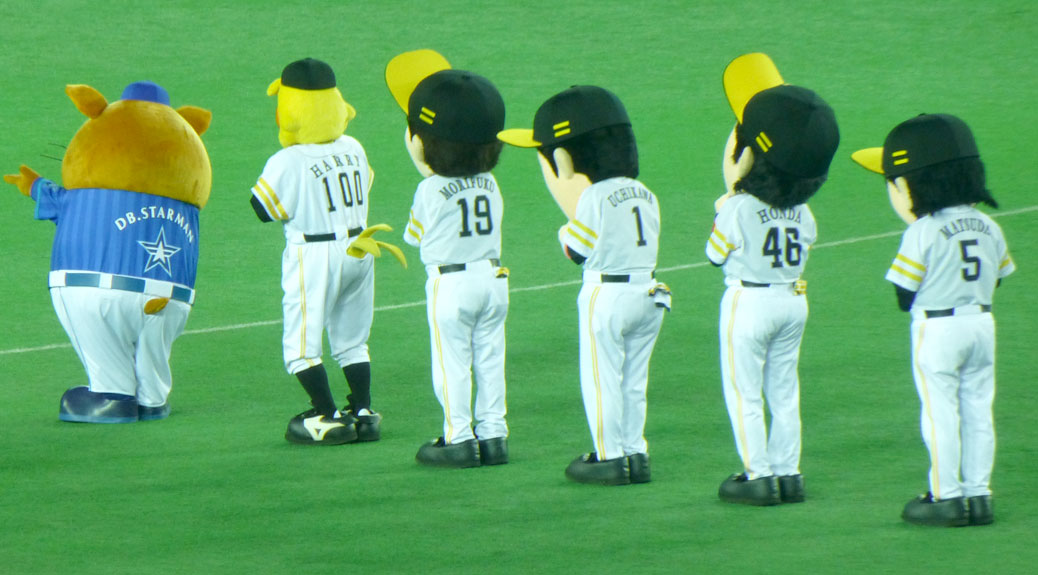
The hometown Hawks were hosting the Yokohama DeNA Baystars. The hour before the game was mostly the Hawks seven (count ’em, seven!) mascots joining the Baystars’ overstuffed bear mascot in dancing to the latest American pop songs. An acrobatic cheerleading group flipped and tossed each other about to the amusement of the crowd. Some ceremonies that seemed to move the crowd were performed. I clapped along at the appropriate time despite not understanding a word of it. The ceremonial first pitch was thrown, which in Japan includes a batter from the opposing team taking a ceremonial weak cut at the pitch.
By the time 2 p.m. rolled around, I’d forgotten why I was in this big dome with all these people. Oh yeah… a baseball game! It was an exciting one, with a dominating pitching performance by Hawks starter Kenichi Nakata and each team trading a big inning at the plate. The Hawks came out on top, winning 4-2 and sending the crowd into a balloon-blowing frenzy.
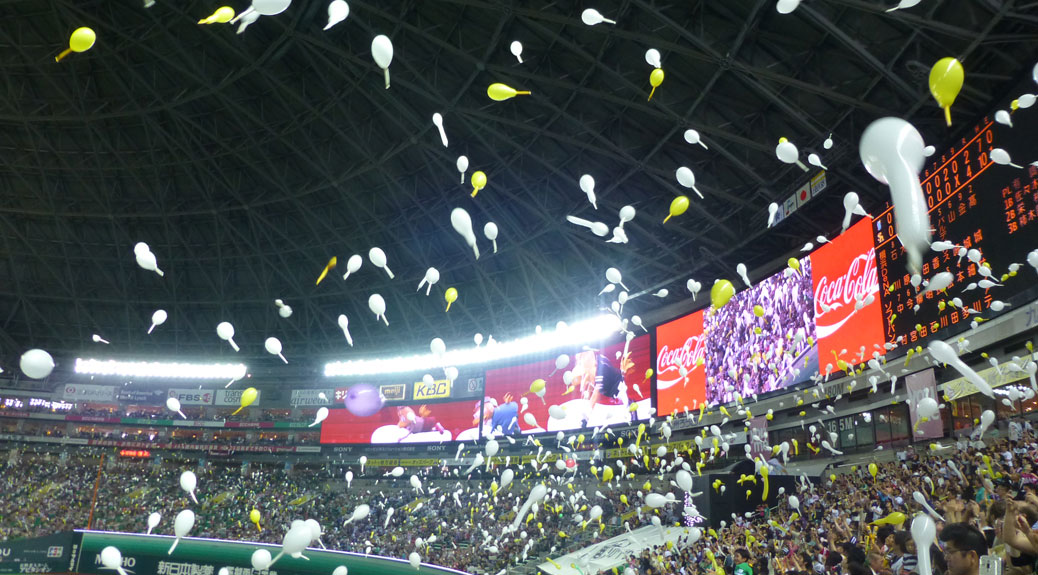
We were able to share the sightseeing activities on Sunday. We started with breakfast at Bakery Kitchen Raggruppi, a small bakery down—you guessed it—a side alley. Google Maps totally missed the mark on this one, but a nice lady who was heading out for a refill on her water bottle walked us several blocks out of her way to the restaurant.
The restaurant offered all-you-can-eat homemade bread with some seasonal treats and an omelet in its upstairs cafe. My plate included a cold kabocha (Japanese pumpkin) soup while the Mrs. had a light potato salad. Some tuna and several large slices of prosciutto had to be navigated, but it was a small price to pay for a great breakfast. We grabbed a few treats in the bakery downstairs on our way out.
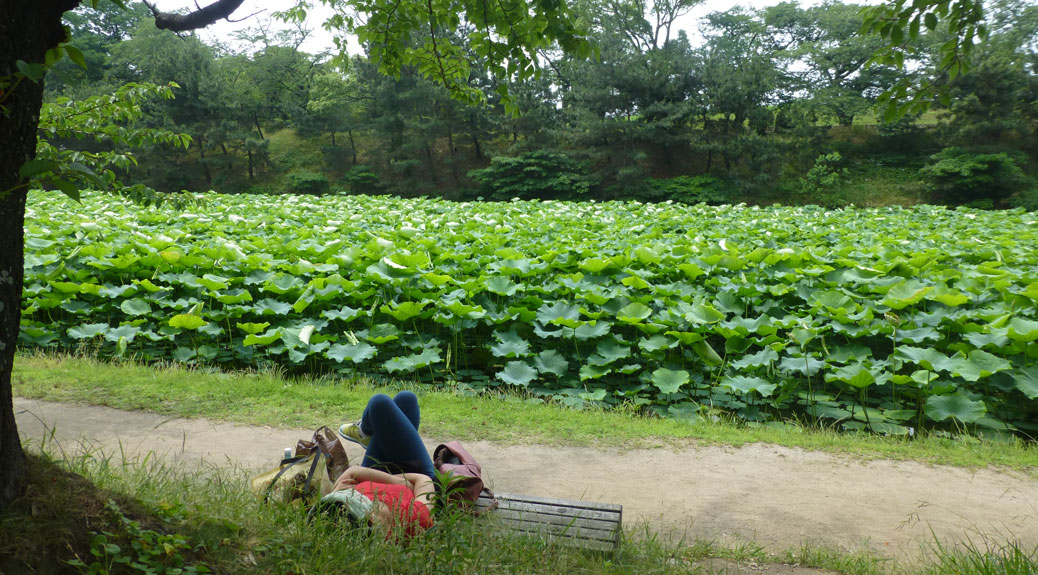
Directly across the street is Maizuru Koen and Ohori Koen. The parks butt up against each other, but apparently are distinct parks. Along the main street, Maizuru Koen greets you with a pond full of lily pads. Large cranes perch in the trees and willow trees fall over the dirt path. Literally steps from a busy street, it was like being in a different world.
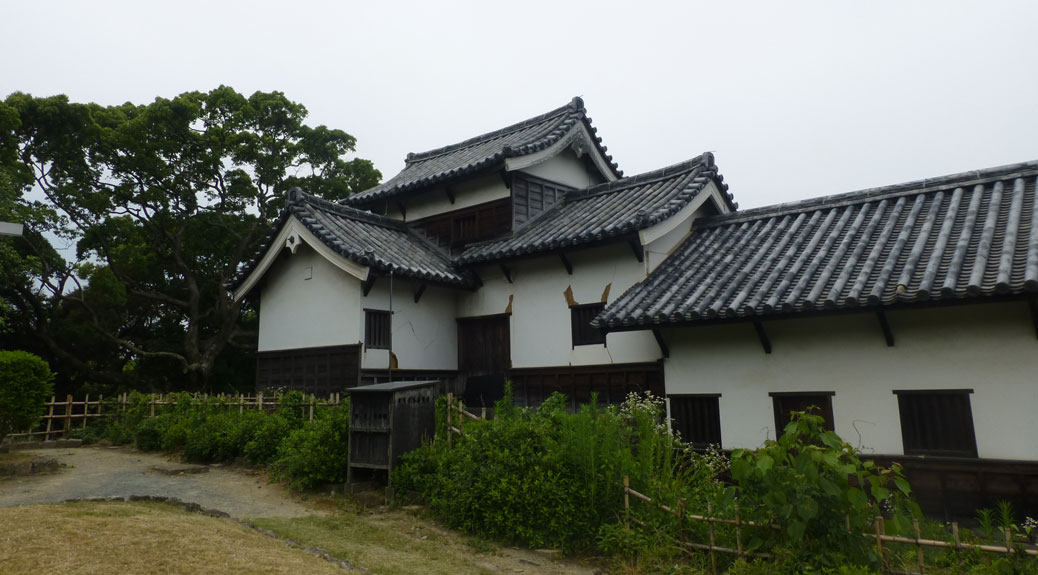
The ruins of Fukuoka Castle are also part of the park. Centuries-old stone walls are visible throughout the complex and a few of the old buildings have been restored. It’s an active restoration site, so new pieces of the old buildings are being unearthed and are open to the public.
A long path leads into Ohori Koen. A large pond is circled by a walking path. Visitors can rent rowboats or swan-shaped pedal boats or just sit along the edge of the pond and enjoy the view. In true Japan fashion, there’s a Starbucks on site, so you can also enjoy a dark chocolate Frappuccino along with the view.

I mentioned Fukuoka’s ranking as one of the world’s most livable cities. Tokyo is actually ranked higher on Monocle‘s list, but I preferred Fukoka’s vibe. The city’s layout is much more of a western-style than Tokyo, which made finding things a lot easier. There was a ton to do without the mass of humanity that comes with a day-trip to Tokyo. Parks and public spaces are numerous and the city has made great use of its bay front with shopping, restaurants and recreational opportunities. The area around Fukuoka Tower is the city’s cultural center, with a large public library, park space, the city museum and sports fields all leading from the main street to the bay front. The transportation system is straight-forward and convenient.
Granted, it was a small sample size, but Fukuoka is definitely one of my new favorite Japanese cities. I’m hoping we’ll get a chance to compare it to Osaka, Kyoto and Sapporo before we leave.

